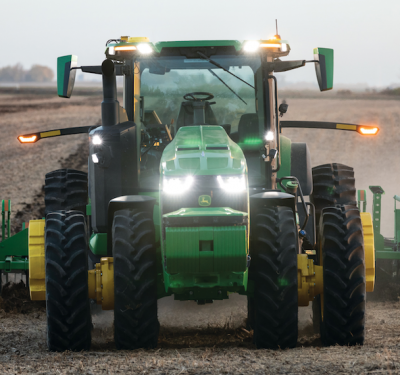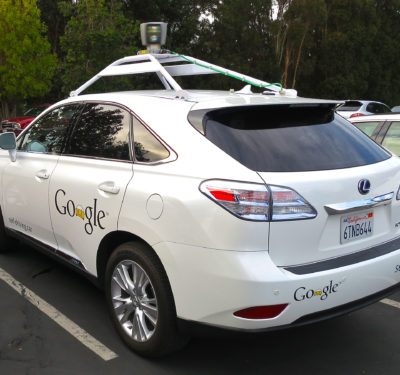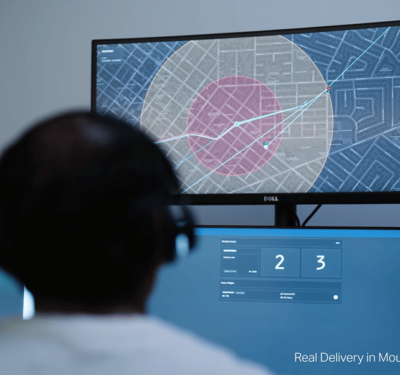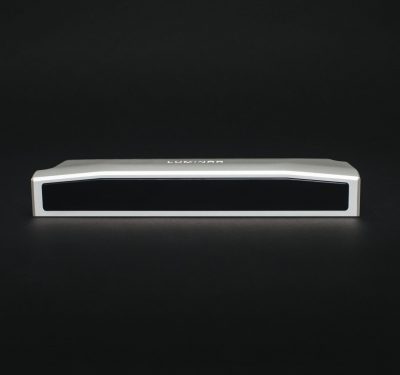Precise positioning enables what was not possible before. As new Topcon Positioning Systems CEO Ivan Di Federico puts it, it can, and will, change the world.
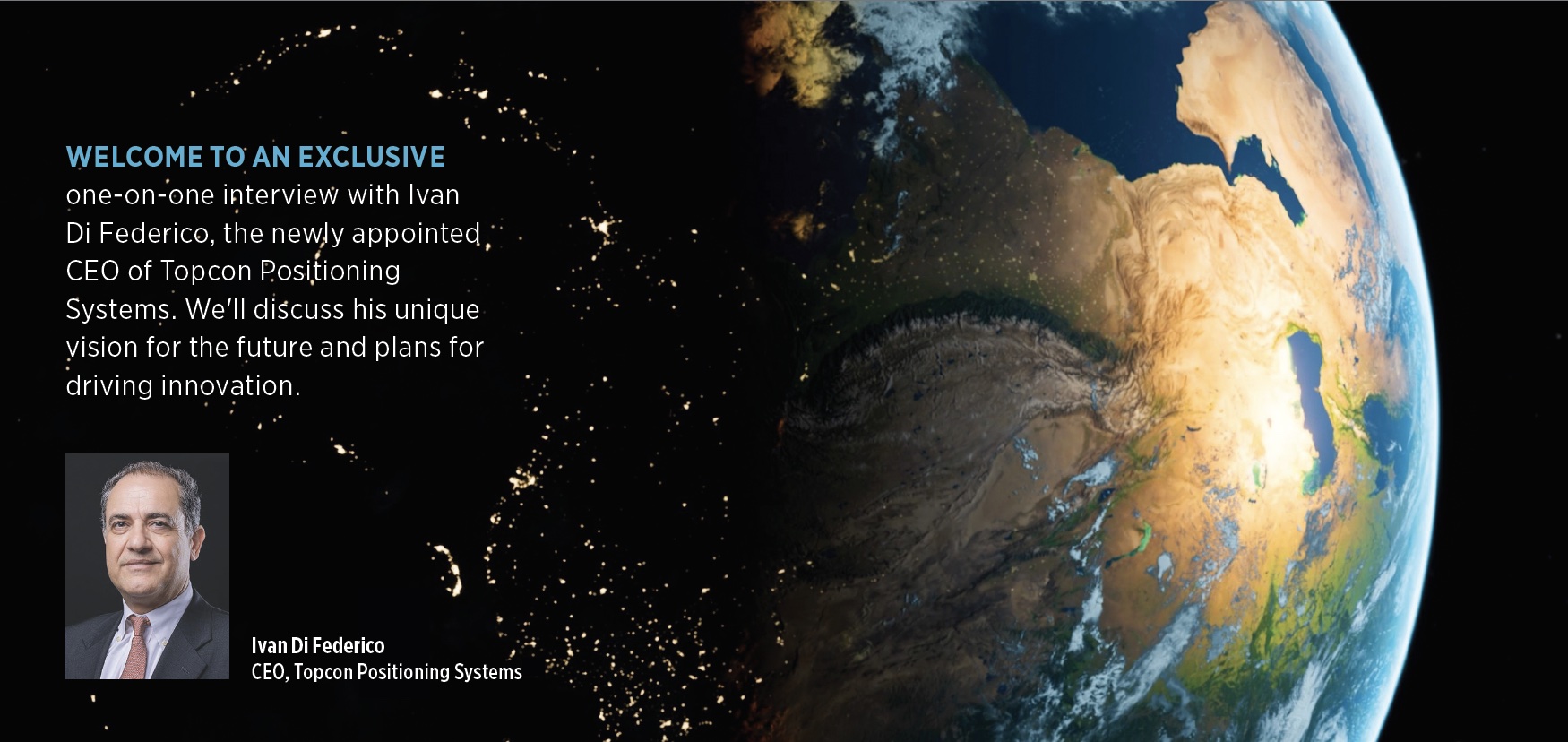
Every new level of accuracy reached brings benefits to society, Di Federico said, deriving a “further level of truth.” And it’s only getting better. Over the course of his two decades with Topcon, Di Federico has seen many industry advancements, from RTK to sensor fusion to today’s focus on making GPS more resilient and precise. The strategic acquisitions and partnerships Di Federico has driven positions Topcon to serve as the foundation for that industry shift toward enhanced precision and increased automation.
It’s not lost on Di Federico just how powerful Topcon’s role and influence is in this “incredible transformation,” and what a critical point we’ve come to in the industry. And at the heart of it all, he said, is the “extreme need for a reliable fix.”
“That is what drives everything,” Di Federico said. “Once you have x, y, z and t in your control, you can rely on that. You can build fabulous things around that. This is essentially what we do. We are making it possible. We are making it reliable. We are making it fast to converge. All these objectives the industry has is attached to that simple x, y, z, t concept to make it always available, always reliable, always safe. Once we do that, the world will really change, and we are part of this.”
Precision enables us to better understand our surroundings, to see things we haven’t seen before, Di Federico said. For example, Topcon develops antennas to monitor ground movement that show how the ground constantly changes. When doing this kind of work, you realize there’s really no such thing as solid ground. It’s liquid, and always changing.
“You see the same point goes up and down, it twists, it does all sorts of things with the sun, with the troposphere, with everything,” Di Federico said. “So you see now, because of that level of control on a position in time, you now know something new. What can be done with that information? It really opens up the opportunity for work and for research. That’s the beautiful part of this business.”
Topcon has a “vision to automate to the best possible degree,” Di Federico said, through 3D machine control on construction sites and in precision agriculture. He sees a future where you simply push a button to 3D print any infrastructure you want, with the solution working exactly as intended and eliminating the need for the plastic “toys” that take a day to build. Inside Unmanned Systems recently sat down with Di Federico to talk about this vision, what it will take to get there and how Topcon is leading the way in the PNT industry’s remarkable transformation.
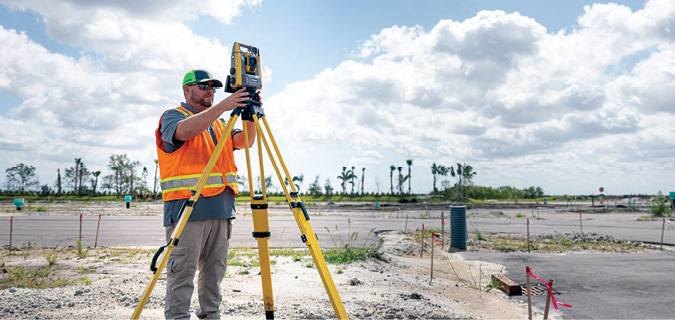
ADVANCING PNT
Topcon’s first goal, Di Federico said, is to “automate the surfacing of the world.”
Robotics streamlined how cars are manufactured, Di Federico said, leading to increased productivity. But, so far, that has stayed within four walls; the level of automation achieved on those lines has not yet been realized in the outside world for construction and infrastructure projects.
“It’s our responsibility to bring that same level of efficiency outside,” he said, “and that’s why machine control is the first step. Then you drive to autonomy and eventually make a swarm of autonomous vehicles that can operate without being monitored at all. They can make decisions. You leave them to do the work, and the work is finished when you arrive. That’s the way it should be, and that’s our inspiration.”
Getting to the point where you push a button like a printer today and the machinery in the field delivers the work, whether on a construction site or a farm, will require adding technology to vehicles as well as in the environment. The vehicles will need to be linked in a “safe and reliable way,” Di Federico said, so there are no accidents. The work will also need to be done in the shortest amount of time possible, consuming the least amount of energy and delivering a precise result. That, Di Federico said, is the end goal of machine control and is what Topcon “lives for through our innovation.”
It all comes back to having x, y, z, t under your control every time, Di Federico said.
“PNT is at the core of the evolution of society because it can achieve these goals,” he said. “If you make any correlation graph in history, our lives become better every time we get the measurement of something under better control. You measure better time and better position, the world evolves. That’s how important we are.”
Topcon is “responsible for this” evolution, Di Federico said, and not just in a lab. The team is focused on “doing this for the mass, for the democracy of all the people to change their lives, because now this information is achievable.”
It’s a long journey, but Di Federico estimates we’re about halfway there. Topcon’s latest acquisitions, which include Satel, a leading innovator in wireless technology, partnerships with companies like u-blox to expand into new markets such as automotive and robotics, along with product innovation from Topcon are paving the way, adding the layers of resilience needed to reach that ultimate end goal.

OVERCOMING EARLY BARRIERS TO ADOPTION
At the beginning of Di Federico’s career, adoption of machine control was slow, and developing and integrating the technology difficult.
“It was very complicated to create a system to do decent work in 3D machine control and to make it simple,” he said. “You had to know a lot about GPS, a lot about base stations, a lot about satellites.”
The person responsible for the technology was typically a machine operator or job supervisor who had limited, if any, experience with GPS, a barrier to adoption early on. Then there was the high cost associated with equipping each vehicle with machine control technology.
What changed that? The iPhone. The development of this technology led to a great evolution in hardware between 2007 and 2010, with the cost per gigabyte of memory chip going down “absolutely dramatically.” Millions of chips were now being made for a computer, not a radio, and that marked a huge change for machine control as well.
“The intuition of Apple is the cell phone is not a phone, it’s a computer that has a phone inside,” Di Federico said. “So, the fact you need a computer in your pocket changed everything.”
The cost per gigabyte was the first significant change, Di Federico said, and the second was intuitive user interfaces. Even with development costs going way down, machine control still came with many moving parts and remained difficult to set up and manage. The touchscreen made things much easier for users, and that helped accelerate adoption.
“Engineers could see the map, their dozer inside the map. They could see the dozer’s blade as opposed to the map and see if they were on grade or not on grade,” he said. “It was impossible before. We didn’t have fast refresh, we didn’t have a touchscreen. And this isn’t just convenience or beautiful colors. Absolutely not. It’s interfacing with the technology that has become easy.”
Not long after these significant advancements, Topcon introduced, with Komatsu, the first factory fit control system in 2013. For the first time, a machine control solution was available that made the complex simple, democratizing the technology and focusing on the user experience.
“Inside the system is still the GPS information, that control loop, there’s Kalman filters, there’s everything, but the operator doesn’t need to know that,” Di Federico said. “All he needs to focus on is the map.”
And the system came fully integrated into the machine, which was quite the shift, Di Federico said. That decision from Komatsu leadership “intimately changed the industry,” and everyone else had to align to compete.
“Before, we were doing aftermarket. You had to go to the dealer after you bought the machine. Now, with this, you buy it from the manufacturer so it’s fully integrated, ingrained with other functions you cannot get aftermarket,” Di Federico said. “This showed to other manufacturers that yes, you can do factory fit, and you will attract much more market share in this way than in the aftermarket solution.”
Of course, the aftermarket business continues as well; there are plenty of vehicles in the construction and agriculture industries that need updated. Equipment dealers continue to thrive, and “have a great business in machine control” because one large manufacturer decided to take that first big step and embed GPS into a dozer a decade ago.
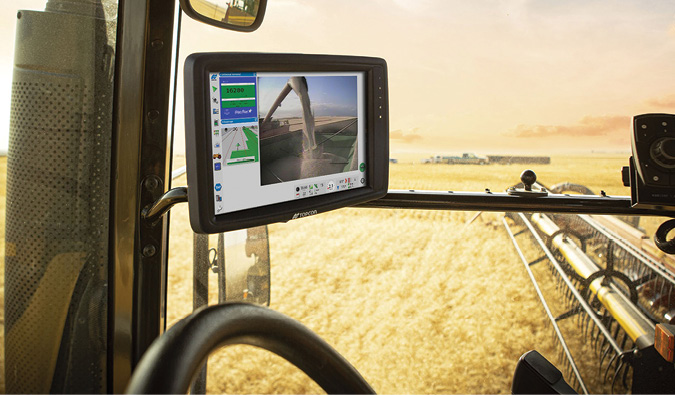
GETTING TO THE END GOAL
While there’s been a lot of progress over the years, there are still steps that must be taken to “print the Earth” with a push of a button. The machines are essentially ready today, Di Federico said, but there are two areas that still need some work. The first? Communication, the motivation behind Topcon’s acquisition of Satel.
A more modern radio will make it possible to create a network of data on a jobsite that’s uninterruptible no matter what happens. That’s key, Di Federico said, because “it’s the flow of data that generates what we want to achieve.”
If you look at radio technology from 20 years ago, it’s basically the same as today’s, with the older versions a little bigger and more expensive. They also have the same protocols. That must change, and Topcon plans to lead the way.
“We are working on the next generation, which has to be uninterruptible and to transfer much more information than it does today, and doesn’t need to rely on cell phone providers or anything,” Di Federico said. “It needs to do it on its own, because we want to be sure that when I push that printer button, it prints.”
Vehicles must be able to securely communicate with each and to the jobsite management control unit, similarly to how it’s done in the military, Di Federico said. The second step is figuring out how to connect the cloud to the vehicle, dividing what’s in the cloud with what’s on the edge with what’s to be discovered.
“Every vehicle will know all the other vehicles, the experience of all the other vehicles, and will know what they need to decide with their own ego, which is what they need to do on that jobsite,” Di Federico said. “In that very moment, when we copy this mechanism of our brain into our vehicles, we will have accomplished the goal of, I make a nice drawing, I study it, I like it, I push it, I print it, I get it and it’s done.”
Topcon is focused on finding that balance between the cloud and the edge, Di Federico said, and is “working on it with the best in class, to completely change the radio environment in which a jobsite operates.”
Topcon calls this mission critical communication, Di Federico said, because without it the machines don’t know what to do next. And preserving that x, y, z, t information is what drives it all.
“Once these elements are solved from a theoretical standpoint, then it’s easy to drive down what the products are, what the costs are to do that. Then you make a complete change in the industry because it’s an industry that doesn’t need an operator or any vehicle that can react to changes in the schedule, to changes in the parameters,” Di Federico said. “Even if a vehicle is down, the others will take over the job for that vehicle automatically. They will talk to each other and generate the end result, no matter what, with precision. And that’s how PNT is so important.”
Satel will run independently of Topcon, Di Federico said, and the technology developed will be available to everyone because “we all need to grow together.”
“Today, to design something and print it, you need a lot of work, a lot of things to arrive,” Di Federico said. “Imagine that we can organize this in a much more efficient way because of the technology we’re developing. And that’s the end goal, to expand the industry for everybody to enjoy these new standards of communication. People think the radio is just to transmit corrections. Well no, it’s the core, it’s the nervous system at any jobsite.”
IMPROVING SAFETY
Resiliency also needs to evolve, Di Federico said, and is part of the motivation behind Topcon’s partnerships with companies like u-blox. It’s critical to go to a chip level to make sure certain fundamentals of GPS are changed to improve safety.
“We need to have new protocols to make sure we are much more resilient to attacks,” Di Federico said. “This is another area where we want to invest, are investing, and where we also expect governments to change their protocols and make more mature systems for GPS for civilian use to have certain features that militaries enjoy, like M-Code.”
You can have all these systems and technologies in place, Di Federico said, but somebody can come along and spoof you, which is “simply not acceptable.” Spoofing and jamming are no longer small risks; they’ve become much bigger concerns. Because of that, cybersecurity needs to “come to the PNT world as quickly as possible.” Di Federico describes this as needing to be a joint effort between industry and government.
“It should be put in at the chip level,” Di Federico said. “Not as an afterthought but as the essential piece of what we do in terms of the new ASICs. But at the same time, constellations need to update and give us the tools to make this safe. Otherwise, the industry will just slow down because this is a major failure that wasn’t designed for.”
BRINGING THE INDUSTRY TOGETHER
For too many years, the PNT industry has been a niche, with scientists primarily just talking to each other. That’s not how you make improvements to society, and Topcon wants to improve society. To get to that 3D printing goal, you have to collaborate. You have to democratize technology developed and make it available to all. That’s the mission at Topcon.
“If we don’t do it, who else is going to do it? We have to do it right. We have to live this path, “ Di Federico said. “We are committed to that as Topcon, but we are also committed to that as an industry. We are open to talk to anybody who shares the vision to create an alliance to speed up standards of adoption, for example. We can work together as an industry to get this done for humanity, for everyone.”


